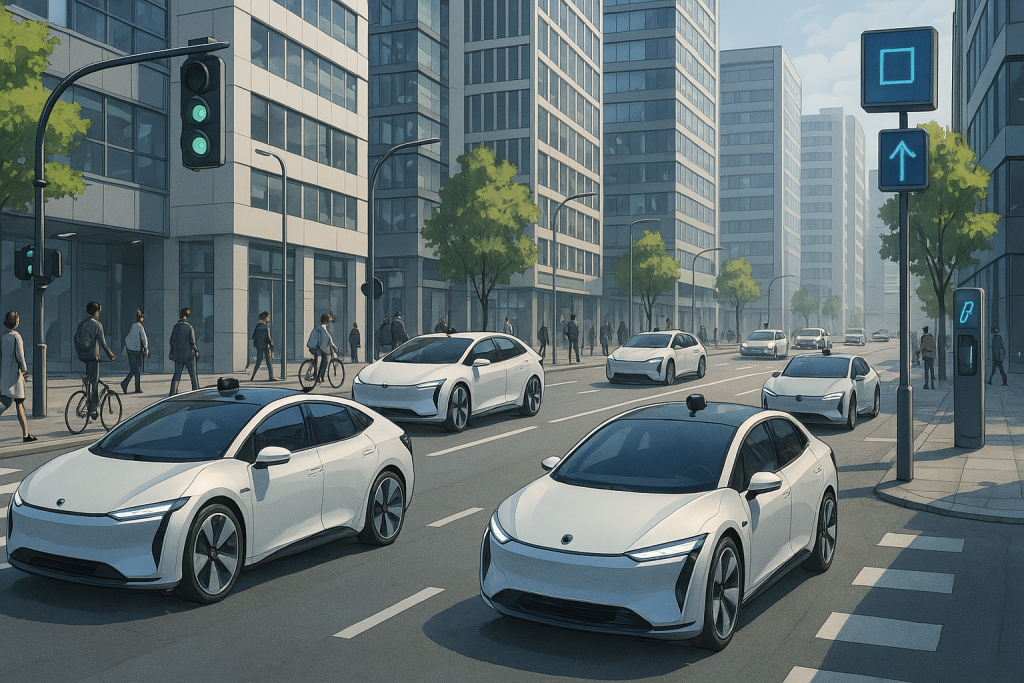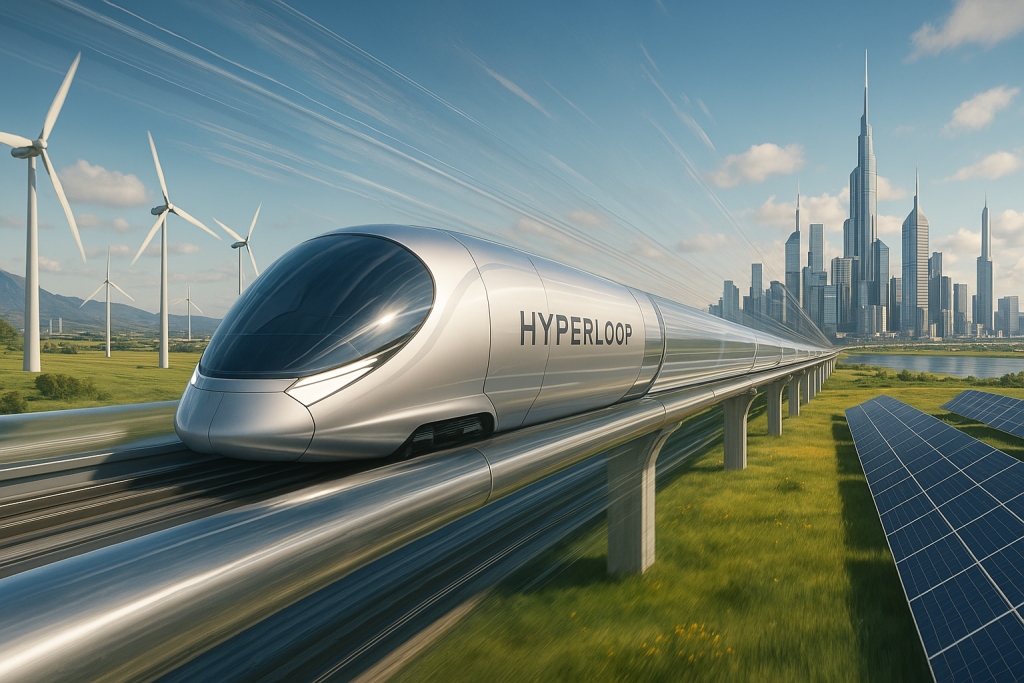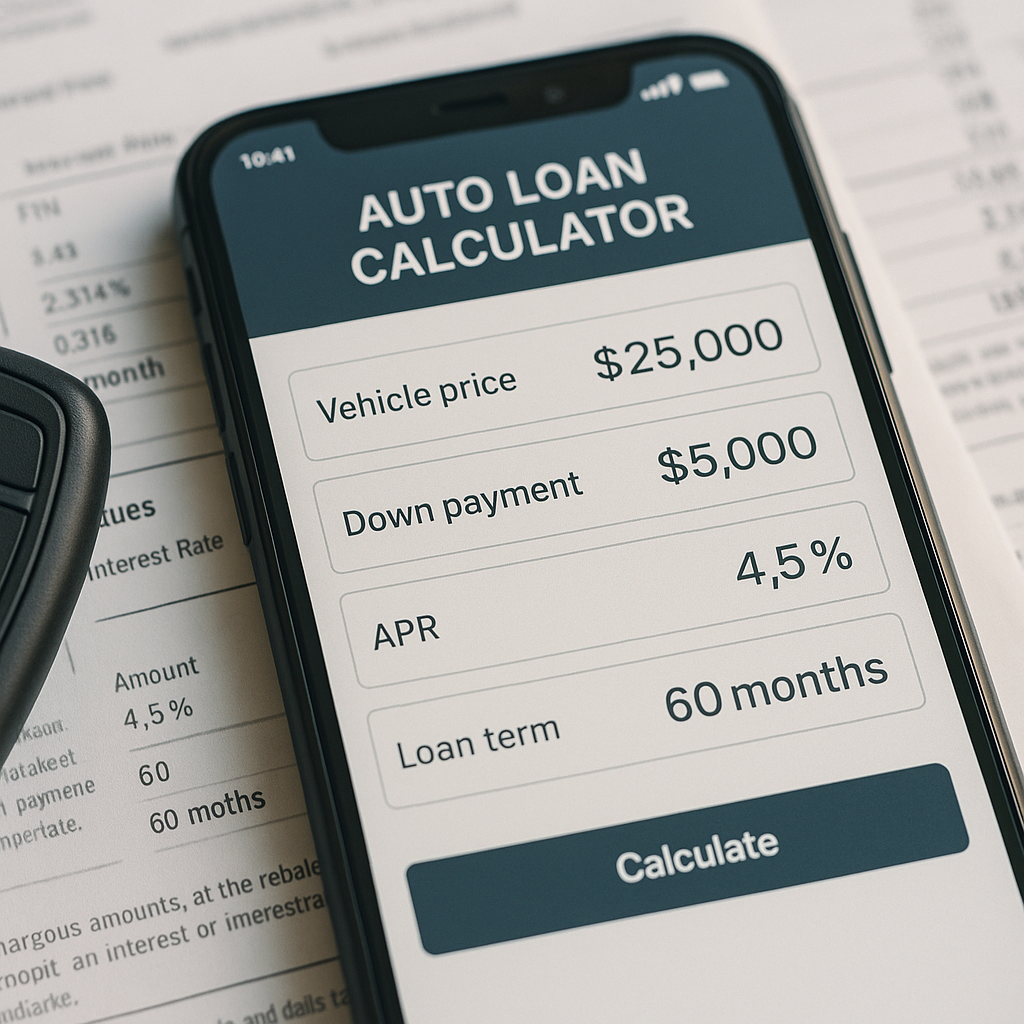The world of transportation is transforming before our eyes. From self-driving cars to high-speed hyperloops, the future promises to be fast, efficient, and sustainable. But as technology accelerates, a critical question arises: Are we truly prepared for what’s coming next? In this article, we explore the groundbreaking advancements shaping transportation, the challenges we must overcome, and how we can gear up for the future of mobility.
Table of contents
- Emerging Technologies Reshaping Transportation
- Sustainability and Green Mobility Solutions
- Challenges to Widespread Adoption
- Preparing for the Future of Mobility
- Final Thoughts
- FAQ: Top Questions About the Future of Transportation
- Q1: When will self-driving cars become common?
- Q2: How safe is autonomous transportation?
- Q3: What is the most eco-friendly mode of transportation?
- Q4: How will future transportation impact jobs?
- Q5: What role do governments play in transportation innovation?
- Q6: What is urban air mobility, and when will it be available?
- Q7: Will hyperloop technology ever become mainstream?
- Q8: How can cities prepare for future transportation systems?
- Q9: What are the privacy concerns with advanced transportation tech?
- Q10: Can sustainable transportation be affordable for everyone?
Emerging Technologies Reshaping Transportation
Transportation innovation is moving at lightning speed, unlocking possibilities we once only dreamed of. What once seemed like futuristic speculation is now becoming part of our daily reality, thanks to groundbreaking advancements across multiple mobility sectors.
Electric Vehicles (EVs): Powering the Road to a Cleaner Future
Electric vehicles are undeniably leading the charge in this transportation revolution. With virtually every major automaker pledging to electrify their lineups, and many countries planning to ban the sale of internal combustion engine vehicles within the next two decades, the EV market is on an unstoppable upward trajectory. The global EV market is expected to exceed 26 million units by 2030, driven by falling battery costs, improved vehicle ranges, and expansive charging networks.
Beyond passenger cars, electrification is also revolutionizing commercial transport. Electric buses, trucks, and even ferries are cutting emissions and noise pollution in cities and ports worldwide. Coupled with renewable energy charging solutions, EVs are fast becoming the cornerstone of sustainable urban mobility.
Autonomous Vehicles: The Promise of Safer, Smarter Travel
Self-driving cars, also known as autonomous vehicles (AVs), represent another transformative force. These vehicles leverage a combination of AI, machine learning, radar, and LiDAR sensors to navigate roads without human intervention. Companies like Tesla, Waymo, Cruise, and others are aggressively testing their autonomous systems, aiming to reduce human error — a leading cause of road accidents.
The benefits of AVs extend beyond safety. They offer enhanced mobility for the elderly and disabled, the potential to reduce traffic congestion through optimized driving patterns, and the convenience of freeing up time during commutes. Fleets of robo-taxis and autonomous freight convoys are already in trial stages, signaling a not-so-distant future of driverless transport.
Hyperloop: Redefining Long-Distance Travel
Hyperloop technology, initially popularized by Elon Musk, is gaining momentum as a game-changing mode of ultra-high-speed travel. Using magnetic levitation and low-pressure tubes, hyperloop pods are projected to reach speeds exceeding 700 mph, dramatically cutting travel times between cities.
Beyond speed, hyperloops promise energy efficiency and lower operational costs compared to traditional high-speed rail. Several companies, including Virgin Hyperloop and HyperloopTT, are building test tracks worldwide, with commercial routes potentially launching within the next decade. Imagine commuting between cities in under 30 minutes — that future might be closer than you think.
Urban Air Mobility: Taking to the Skies
Urban air mobility (UAM) is no longer the stuff of science fiction. Companies like Joby Aviation, Volocopter, and Lilium are leading the way in developing electric vertical take-off and landing (eVTOL) aircraft, commonly known as flying taxis. These vehicles aim to ease urban congestion by providing fast, airborne alternatives for short to medium-distance travel.
Similarly, delivery drones are becoming increasingly mainstream, offering rapid logistics solutions for everything from medical supplies to consumer packages. Pilot programs worldwide are already demonstrating their potential, especially in hard-to-reach or congested areas. As regulations evolve, expect to see skies buzzing with drones and air taxis in the not-so-distant future.
The Interconnected Future of Mobility
What’s truly exciting is how these technologies interconnect. Imagine a future where your EV is charged using solar power, your commute involves a combination of autonomous ride-sharing and hyperloop travel, and your lunch arrives by drone — all seamlessly coordinated through smart city infrastructure.
Together, these emerging technologies are not only reshaping transportation but also redefining how we live, work, and connect. They promise a future of mobility that is faster, cleaner, safer, and more efficient than ever before.

Sustainability and Green Mobility Solutions
The push for sustainability is not just influencing transportation — it is redefining it from the ground up. With climate concerns taking center stage globally, there is an urgent demand for greener, cleaner mobility solutions that reduce our dependence on fossil fuels and lower carbon footprints.
Alternative Fuels: Powering the Shift to Clean Energy
Alternative fuels such as hydrogen and biofuels are rapidly gaining traction. Hydrogen fuel cells, in particular, offer impressive potential for both passenger vehicles and heavy-duty transport like buses and freight trucks. They produce zero tailpipe emissions, with water vapor as the only byproduct. Biofuels, derived from organic materials, provide another cleaner alternative that can help decarbonize sectors where electrification may be challenging, such as aviation and maritime transport.
By integrating these alternative fuels, industries can significantly reduce greenhouse gas emissions while maintaining performance and convenience for consumers.
Renewable Energy-Powered Transport Networks: A Game Changer for Cities
The rise of renewable energy sources like solar and wind power is transforming transport infrastructure. Solar-powered EV charging stations are becoming commonplace in forward-thinking cities, making it easier for drivers to “fuel up” sustainably. Additionally, public transport systems powered by renewable electricity are reducing urban pollution and improving air quality.
Incorporating renewables into transport networks also enhances energy resilience, decreasing reliance on volatile fossil fuel markets and promoting long-term energy security.
Smart Cities: Building Sustainable Urban Ecosystems
Smart cities are at the forefront of sustainable transportation. These urban environments leverage integrated transport systems that use real-time data to optimize traffic flow, reduce congestion, and minimize emissions. Features like dynamic traffic light management, smart parking systems, and multimodal transit apps help commuters make greener choices every day.
Moreover, smart public transportation options — including electric buses and shared micro-mobility services like e-scooters and e-bikes — encourage residents to leave their personal vehicles at home, further easing the strain on urban infrastructure and reducing overall emissions.
Government Policies: Catalyzing Green Transformation
Governments worldwide are playing a pivotal role in accelerating sustainable mobility. Policy initiatives such as tax incentives, subsidies, and grants are making green transport options more affordable for consumers and businesses alike. Many countries have also set ambitious goals to phase out internal combustion engine vehicles entirely over the next few decades.
Investment in public infrastructure, research funding for clean transport technologies, and strict emissions regulations are helping to push industries toward greener alternatives. These policy frameworks send a clear signal: the future of mobility must be sustainable, and governments are ready to lead the charge.
A Holistic Vision for Sustainable Transportation
Ultimately, sustainable transportation is about more than just reducing emissions — it’s about creating healthier, more livable cities for future generations. It’s about cleaner air, quieter streets, and more connected communities. By embracing alternative fuels, integrating renewables, fostering smart urban planning, and aligning with progressive policies, we’re steering toward a future where mobility is both innovative and environmentally responsible.
Challenges to Widespread Adoption
As exciting as the future of transportation may be, progress is not without its hurdles. Turning visionary concepts into everyday realities requires addressing several complex and interconnected challenges.
Infrastructure Readiness: Building the Foundations of Future Mobility
One of the most significant obstacles is infrastructure readiness. Many cities and regions still rely heavily on outdated transport networks that aren’t equipped to support emerging technologies. For example, the rollout of electric vehicles (EVs) depends on widespread availability of fast-charging stations — yet, in many areas, charging deserts remain. Similarly, smart grids capable of efficiently managing energy consumption for millions of EVs are still in developmental stages.
Moreover, infrastructure for autonomous vehicles — such as 5G networks for real-time data exchange and smart traffic signals — needs substantial investment. Without these upgrades, even the most advanced vehicles will face limitations. Building this foundation takes time, coordination, and considerable public and private investment.
Public Trust: Overcoming Skepticism and Safety Concerns
Adoption rates for new transportation technologies hinge heavily on public trust. Autonomous vehicles and drone-based delivery systems, while groundbreaking, still evoke concerns about safety and reliability. High-profile accidents involving self-driving prototypes have intensified public skepticism.
To gain widespread acceptance, manufacturers and policymakers must prioritize transparency. Clear communication about testing protocols, safety records, and ongoing improvements is vital. Public demonstrations and controlled pilot programs can also help build confidence by allowing people to experience new systems in a safe, controlled environment.
High Costs: The Price of Innovation
Cutting-edge transportation technologies often come with a hefty price tag, at least initially. Electric cars, autonomous systems, and even the prospect of hyperloop travel require significant financial outlays, making them inaccessible to many consumers and businesses alike.
However, as these technologies mature and production scales up, costs are expected to gradually decline — much like we’ve seen with solar panels and consumer electronics. In the meantime, subsidies, tax incentives, and government-backed financing programs will be essential to make future mobility solutions more inclusive and widely adopted.
Regulatory Complexities: Navigating a Fragmented Landscape
Global transportation innovation faces a patchwork of regulations that vary not only from country to country but sometimes even between states and cities. Safety standards, data privacy laws, and operational guidelines for autonomous vehicles and drones remain inconsistent, complicating efforts for companies seeking to deploy their solutions at scale.
Regulatory bodies are working diligently to catch up with the pace of innovation, but establishing globally harmonized standards is a complex and time-consuming process. International cooperation will be crucial, especially as transportation networks become increasingly interconnected across borders.
Interconnected Challenges Require Collaborative Solutions
What makes these challenges particularly daunting is how deeply interconnected they are. Without clear regulations, public trust wavers. Without public trust, widespread adoption stalls. And without a robust infrastructure, even the most promising technologies cannot thrive.
Addressing these barriers demands a holistic, collaborative approach. Governments, private companies, urban planners, and everyday citizens must work together to create an environment where future mobility can flourish.
Preparing for the Future of Mobility
So, how can we truly get ready for the fast-approaching future of transportation? It’s not just about embracing shiny new tech — it’s about building a well-rounded ecosystem that supports innovation, safety, and accessibility for all.
Industries Must Stay Agile and Future-Focused
The transportation sector must continuously evolve. Companies need to not only invest in research and development but also be willing to pivot as new breakthroughs emerge. Agile businesses will be able to integrate cutting-edge solutions — such as vehicle-to-everything (V2X) communication, electrification, and automation — into their operations seamlessly. Collaboration across sectors, from automotive to tech, and even energy providers, will be essential for creating cohesive, future-ready transportation networks.
Public-Private Partnerships: Driving Innovation Forward
No single entity can build the future of mobility alone. Governments and private companies must work hand-in-hand to develop the necessary infrastructure, like smart roads, EV charging networks, and air mobility corridors. These partnerships can unlock funding for large-scale projects and ensure that regulations keep pace with technological advancements. Additionally, such collaborations foster innovation zones — designated areas where new transport solutions can be safely tested and refined.
Upskilling the Workforce for the Mobility Revolution
As automation and AI become integral parts of transportation, the workforce must evolve too. While some traditional roles may diminish, new opportunities are rapidly emerging in areas like robotics maintenance, AI programming, cybersecurity for smart vehicles, and data analytics. Proactive reskilling initiatives will help workers transition into future-ready roles, reducing employment gaps and fostering economic growth. Educational institutions and companies alike must prioritize training programs that align with the demands of the mobility revolution.
Community Engagement: Building Trust and Understanding
Public acceptance is the linchpin of future transportation success. People need to feel confident in the safety, security, and reliability of new mobility options. This is where transparent, consistent community engagement becomes vital. Governments, tech developers, and urban planners should prioritize public forums, demonstrations, and open dialogues to educate citizens about both the benefits and potential risks of advanced transport systems. When communities understand how these changes improve daily life — from cleaner air to shorter commutes — adoption rates will rise naturally.
A Shared Responsibility for a Better Future
Ultimately, preparing for the future of mobility is a shared responsibility. Governments, industries, educators, and citizens all have critical roles to play. By fostering collaboration, prioritizing education, and maintaining flexibility, we can collectively build a transportation ecosystem that’s not only innovative but also inclusive, safe, and sustainable for generations to come.

Final Thoughts
The future of transportation is thrilling, filled with possibilities that can transform how we live, work, and connect. While challenges remain, the momentum toward smarter, cleaner, and more efficient mobility solutions is undeniable. With thoughtful planning, collaboration, and a people-first mindset, we can pave the way for a better, more connected future.
FAQ: Top Questions About the Future of Transportation
Q1: When will self-driving cars become common?
Predictions vary, but many experts suggest within the next 5–10 years for widespread adoption in urban areas.
Q2: How safe is autonomous transportation?
Safety is a top priority. Autonomous vehicles undergo rigorous testing, but public acceptance depends on regulatory approval and real-world performance.
Q3: What is the most eco-friendly mode of transportation?
Electric public transport, biking, and walking are currently the most sustainable options, with advancements in biofuels and hydrogen vehicles on the horizon.
Q4: How will future transportation impact jobs?
While automation may replace some roles, it will also create new jobs in tech development, maintenance, and urban planning.
Q5: What role do governments play in transportation innovation?
Governments are crucial for setting regulations, funding infrastructure, and incentivizing green initiatives to support next-gen transport systems.
Q6: What is urban air mobility, and when will it be available?
Urban air mobility includes air taxis and drones designed for city travel. Test flights are already underway, with potential commercial use expected in the next decade.
Q7: Will hyperloop technology ever become mainstream?
While still in the experimental stage, hyperloop systems show promise for ultra-fast travel. Commercial deployment could happen within the next 10–15 years if infrastructure and investment align.
Q8: How can cities prepare for future transportation systems?
Cities need to invest in smart infrastructure, update regulations, and collaborate with innovators to ensure seamless integration of new technologies.
Q9: What are the privacy concerns with advanced transportation tech?
Connected vehicles and smart transport systems collect data to improve efficiency, raising concerns about data privacy and cybersecurity.
Q10: Can sustainable transportation be affordable for everyone?
As technologies mature and scale, costs are expected to decrease, making green transportation more accessible to broader populations.




4 thoughts on “The Future of Transportation: Are We Ready for What’s Next?”
ptm3g6
dg93qc
r1ewpk
ivlmuh